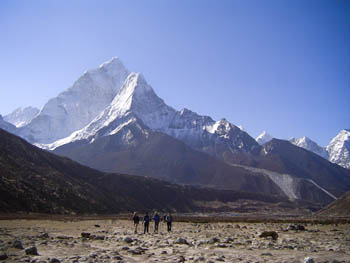 Anyone heading for the heights this year should think about packing one essential bit of kit.
Anyone heading for the heights this year should think about packing one essential bit of kit.
High altitude – anything above 1,500m above sea level – brings problems not encountered in Britain, where the tallest peak is a mere 1,344m. There’s a useful addition to the rucksack of any traveller bound for the high mountains, and the best bit of news is: it’s free!
Trekking to the high mountains can land walkers in trouble
Travel At High Altitude is a 48-page downloadable booklet produced by medical experts to help you avoid the pitfalls of going into the type of terrain that the UK can’t offer. Problems can occur not just in the Himalaya or Andes, but closer to home in the European mountain ranges, such as the Alps or Pyrenees.
The guide is produced jointly by Medex and Medical Expeditions, which conduct research into high-altitude medicine. The booklet was drawn to our attention by grough reader Denzil Broadhurst, who jointly edited the work. Denzil is also a deputy leader of a mountain rescue team.
Travel At High Altitude will tell you what drugs you should take, and the most common mistakes which lead to acute mountain sickness and even, in rare cases, death. There are also chapters on choosing the right company and how to protect the fragile high-altitude environment. Not all trekking companies treat their porters well, so there are questions you should ask before committing your precious foreign exchange.
There are seldom discussed facts such as the difficulty people with laser-refractive surgery to their eyes may encounter at altitude, and the more mundane but just as essential facets such as women’s sanitary and contraceptive issues in the thin air of the high mountains.
The work is written in plain English and is endorsed by bodies such as the British Mountaineering Council, the Union Internationale des Associations d’Alpinisme and the British Association of Mountain Guides.
The PDF of the booklet is available free at the Medex website.